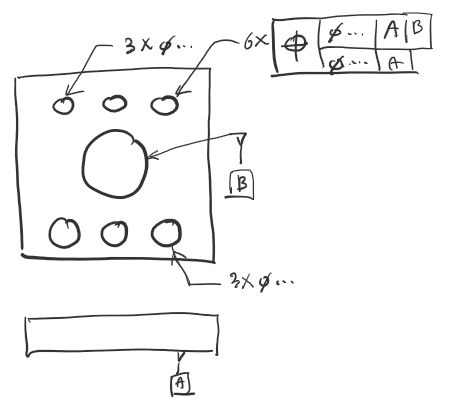freerangequark
Mechanical
Question: According to Y14.5M, is it permissible to use a composite tolerance to control a hole pattern of different sized holes? If so, how should it be annotated?
I found this thread which says yes.
I also found this tutorial with video which also says yes and references ASME Y14.5M-1994, paragraph 5.11.1.6
In ASME Y14.5M-1994 however, section 5.11 is titled "COAXIALITY CONTROLS".
Does this allow a composite tolerance to control a hole pattern of different sized holes? If so, how should it be annotated?
Can you add any clarity to this matter? The links makes sense to me and it would be rather restricting if a composite tolerance controlled hole pattern could only exist with the same size hole.
Thanks,
Glenn
I found this thread which says yes.
I also found this tutorial with video which also says yes and references ASME Y14.5M-1994, paragraph 5.11.1.6
In ASME Y14.5M-1994 however, section 5.11 is titled "COAXIALITY CONTROLS".
Does this allow a composite tolerance to control a hole pattern of different sized holes? If so, how should it be annotated?
Can you add any clarity to this matter? The links makes sense to me and it would be rather restricting if a composite tolerance controlled hole pattern could only exist with the same size hole.
Thanks,
Glenn

